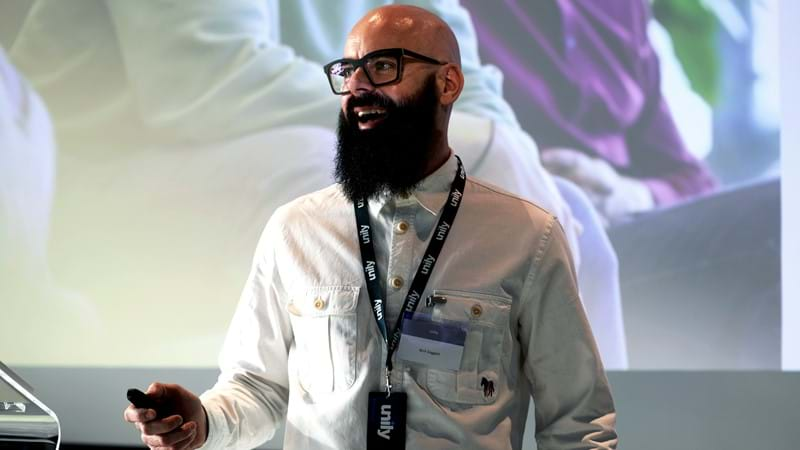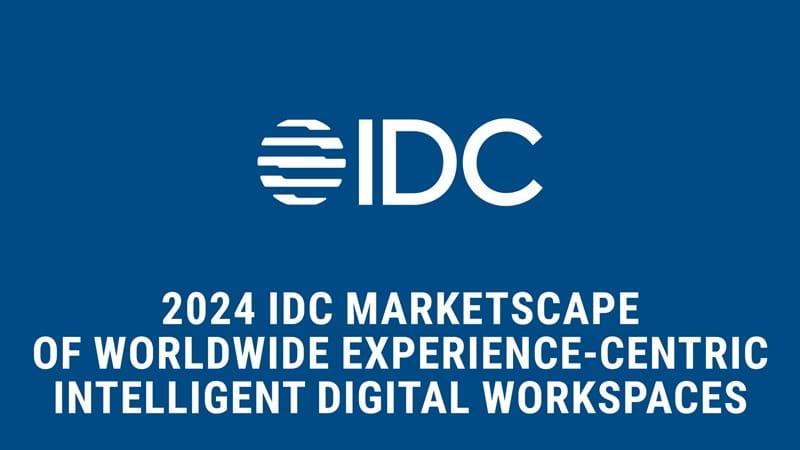Why your service desk application is not an employee experience platform
Enterprises everywhere are looking to technology to upgrade their employee experience and increase profit. At the same time, vendors everywhere are vying for their business. As a result, the market is getting murky with enterprise technology providers of all types spilling into the employee experience space, claiming to have the all-up solution to their problems. So, can your service desk and workflow application also become your all-up employee experience solution at the heart of your digital workplace?

The employee experience technology landscape is getting murky
According to Gallup, 77% of employees worldwide are disengaged at work and 6 in 10 are ‘quietly quitting’. These low engagement scores are estimated to be costing the global economy $8.8tr. It’s no surprise then that enterprises everywhere are clamoring to reverse the tide on engagement and turning to technology to do so.
As a result, we’ve seen the employee experience technology market explode. Everyone wants a piece of the pie. And that means vendors of all types in the enterprise technology space are turning their attention, and their messaging, towards the employee experience.
From Microsoft and the launch of the Viva suite back in 2021 to workflow and service desk applications now beginning to position themselves as employee experience platforms, everyone is claiming to be able to provide the all-up solution to employee experience challenges. And with IT teams looking to make their budgets stretch as far as possible, the temptation to extend the use-case of an existing technology is palpable. But is it the right way to go? Can a service desk and workflow application really function as a true employee experience platform?
-
Event
Service desk and workflow apps vs true employee experience platforms
To get to the bottom of this debate, we must first understand the difference between the two offerings.
A true employee experience platform is designed from inception to act as an exquisitely designed front door to the digital workplace. They are designed from the ground up to prime employee engagement and simplify the digital experience through impactful integrations. EXPs are comms-centric, UX-first, and they tackle productivity from a ‘how can we make it easier for the average employee to complete common tasks and access siloed information?’ standpoint.
Intended to operate at the heart of the digital workplace, a true employee experience platform will leverage integrations to pull disparate applications together into a single pane of glass experience. This experience will lean on consumer-grade UX to entice people in and keep their attention – it will be carefully designed for intuitive navigation leveraging best practices from the most addictive consumer apps.
The ethos of the EXP is that engagement comes before productivity – when a connected, inspired, and vibrant culture is achieved, productivity integrations are then positioned to add value. That’s not to say EXPs don’t deliver on increased efficiency – you only need to look at independent analysis from Forrester to see that EXPs drive immense ROI from productivity gains – but EXP vendors understand that without culture, engagement, and adoption, increasing efficiency is a false economy.
On the flip side, we have workflow and service desk applications. These applications are firmly productivity-driven. They are excellent at orchestrating seamless workflows that streamline complex HR and IT processes. But these types of applications were not built to operate as a front door to the digital workplace, they are not designed to engage employees, and they have lackluster UX to reflect that. They can be powerful enablers once the foundations for engagement and culture are set, but, alone, they are not devised to meet this use case.
To summarize, the hallmarks of a true EXP are:
- Powerful two-way communications experiences that fuel culture and engagement
- Consumer-grade UX that drives platform adoption and engagement
- Integrations designed to unify disparate applications and enable common tasks to be completed without leaving the platform (e.g., searching for knowledge across repositories, booking and managing leave requests, submitting and approving expenses, etc.)
So, can a service desk application meet these EXP requirements?
Unlike true EXPs, service desk applications were not built to act as a digital front door to the IT estate, and they definitely weren’t designed to solve engagement challenges. They’re great at serving functional use cases, like simplifying HR and IT processes, but when it comes to providing a user-friendly interface that engages employees, they fall down. They do not have the powerful, enterprise-scale communications features that EXPs provide, and they are not designed to serve up information in a way that’s engaging to the masses. Beyond that, they’re also not designed to be owned by non-technical teams – so you’re looking at returning to a time where your "intranet" is owned by IT.
Although we are seeing service desk applications begin to pick up on basic communications needs as they strive to position themselves as a suitable front door to the digital workplace, these steps in the right direction are in a state of infancy. The communications capabilities of a workflow or service desk application will take decades to compete with what’s on offer in the Intranet Packages Solution (IPS) marketplace. And, in the meantime, aggressive innovation in the IPS or EXP space will likely have caught up with the orchestration capabilities offered by workflow apps.
Those that opt to build out their employee experience solutions on service desk and workflow apps risk staying behind the curve on engagement, losing talent to businesses that have prioritized culture, and wasting time betting on a big fish that leaves them swimming in a big sea.

Productivity without engagement is meaningless
Even with the slickest tools at their fingertips, productive employees can’t make an impact without understanding the mission, vision, and values of your organization. This is what productivity-driven IT projects often overlook. The tangible value of speeding up employees' ability to get tasks done is easy to see. So, it makes sense that organizations prioritize the need to make employees more efficient. But increasing efficiency is only valuable if employees are pulling the rope in the same direction.
Productivity alone won’t make a business sing. In fact, culture, collaboration, and effective communication are the true drivers of engagement. Only when you have these foundations laid can increasing efficiency drive results. Employee experience platforms are designed to do both in a way that delivers maximum value to the most people.
The bottom line is this: if employees don’t understand the mission, vision, and values of your company, and if they’re not emotionally connected with their employer supported by a platform they love, it doesn’t matter how fast they can complete a task.
Let point solutions do what they’re good at
There is little doubt that the innovations in the service desk application space offer businesses an edge when it comes to orchestrating complex HR and IT workflows to improve functional productivity. The value of these applications should not be overlooked. But in terms of acting as a front door to the digital workplace, employees need something sexier.
EXPs are that proven front door. Enterprises should be looking to let point solutions do what they’re good at, instead of trying to make them work for something they weren’t designed for. To really reap the value of the many technologies available to us, we must make them play in their own arenas and, instead of trying to make one solution be the jack of all trades, focus on bringing cohesion to the digital experience with an experience layer that’s joyful to use.
No one technology can do it all – but with the right platform to bring them together, we can bring out the best of each. That’s how we’ll start making the gains needed to usher in a more productive, collaborative, and engaged future of work.
-
Event














